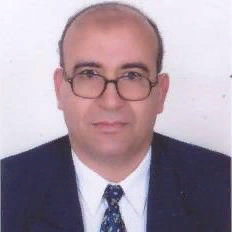
Mahmoud Abdalla
Work place: Faculty of Engineering, Zagazig University, Zagazig, Egypt.
E-mail: mabdalla2010@gmail.com
Website:
Research Interests: Image Processing, Image Manipulation, Neural Networks
Biography
Mahmoud Abdalla received the B.Sc. and M.Sc., from the faculty of Engineering, Mansoura University, Egypt in 1979 and 1984 respectively, and Ph.D. degrees from the faculty of Engineering, Zagazig University, Egypt in 1989. He is currently work as a Professor of Electronic and Electrical Communication, Faculty of Engineering, University of Zagazig. His current research interests include digital Signal Processing ,Neural Networks image enhancement and digital communication.
Author Articles
A Discriminative Statistical Model for Digital Image Forgery Detection
By Amira Baumy Naglaa. F Soiliman Mahmoud Abdalla Fathi Abd El-Samie
DOI: https://doi.org/10.5815/ijem.2016.06.01, Pub. Date: 8 Nov. 2016
The headway of modern technology and facility to use processing software leads to tamper and implicate of digital images. This tampering is being performed without leaving any a clear effect noted with the naked eye. The discrimination between different authentic and forged images can be based on its Probability Density Functions (PDFs). This paper introduces a new model for digital image forgery detection. This framework has two main phases; training and testing. In the training phase, the peak is calculated for the derivatives histogram of the illumination components by using homomorphic filter to separate the illumination components on each image. Firstly, the derivative of illumination histogram for authentic and forged images is calculated then the PDFs are estimated for authentic and forged images, finally the threshold is determined. In the testing phase, the determined threshold is tested with realistic dataset followed by using the selected bins for feature calculation in the prediction process. In the final prediction step, a detection and decision process is performed to obtain performance of the new model. This new model is provided a very effective performance. Different color image contrast systems RGB and HIS are studied and utilized for testing our model and compare between each channel for two systems to estimate performance and obtain more sensitive channel.
[...] Read more.Other Articles
Subscribe to receive issue release notifications and newsletters from MECS Press journals